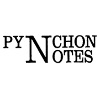Abstract
Pynchon's references to mathematics and science attracted early notice among the first critics confronting the unsettling complexities of Gravity's Rainbow. Lance Ozier explicated the mathematical concepts underlying the Pointsman/Mexico dualism (AA) and the transformations of Slothrop and others (CT). Joseph Slade, in his pioneering book-length study, provided the template for much later discussion of Pynchon's interest in and thematic use of mathematics and science. Other critics writing soon after the publication of Gravity's Rainbow also remarked on Pynchon's heterodox preferences in both content and narrative structure. Pynchon's marshalling of film, music, history and religion as well as science, technology and mathematics contributes to the apparent pastiche of Gravity's Rainbow, which–diverse as its contents and methods are–critics increasingly argued was structured with uncommon artfulness.
How to Cite:
Welsh, L., (2001) “The Three Equations in Gravity's Rainbow”, Pynchon Notes , 157-169. doi: https://doi.org/10.16995/pn.94
Downloads:
Download PDF

